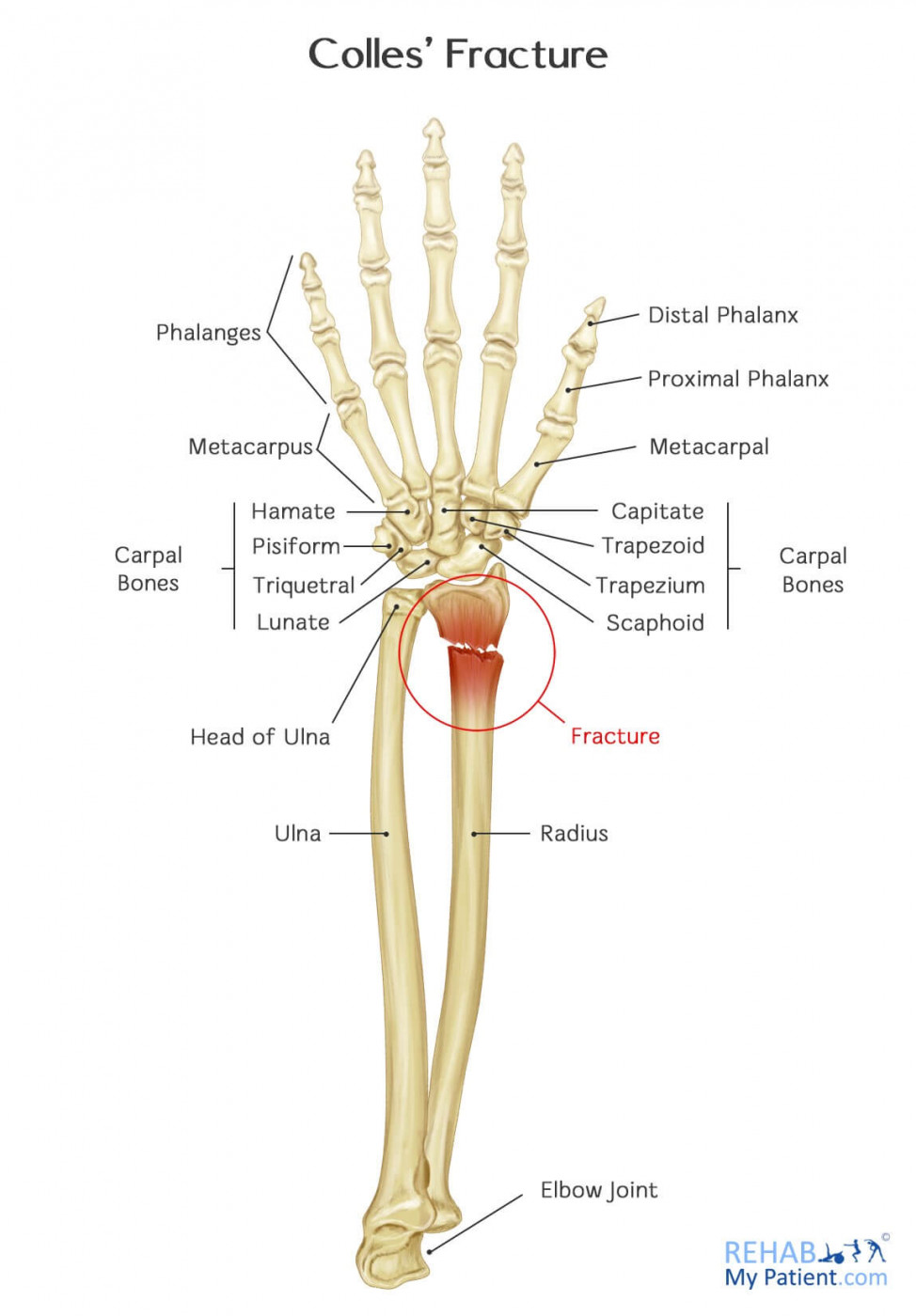
A Colles’ Fracture is often referred to as a broken wrist. It is technically a break within the larger of the two bones in the forearm. In this situation, the bone will break on the lower end close to where the thumb side of the wrist and the hand bones are connected to the wrist. This particular type of fracture is quite common; it is the most common of all broken bones in the arm. In the US, one of every 10 broken bones is that of a broken wrist.
Most of the time, the bone is broken as a result of falling onto an arm that is outstretched or being hit on the wrist. For those who participate in contact sports, inline skaters, bikers and skiers, this is the most common injury. If you have thinning of the bones and osteoporosis, you are at an increased risk for these fractures. Anyone can get this type of fracture if they were to get hit or fall.
Wrist fracture can also be caused from a high impact road traffic accident, as the hands are on the steering wheel trying to brace during impact. This can forcibly hyper extend the hand and wrist, causing the fracture.
But how do you know if you have a Colles’ fracture? First of all, the fracture should be ruled if you have taken trauma to the wrist, such as a fall on the outstretched arm. You will also notice sharp pain when moving the wrist, and there may be inflammation and swelling present. The most painful movements of the wrist are flexion and extension (i.e. bending or extending your wrist).
Colles’ Fracture Anatomy
The radius is the larger of the forearm bones. The end that is located near the wrist is referred to as the distal end. Fracturing of the distal radius happens when the area that surrounds the radius close to the wrist ends up breaking.

How to Treat a Colles’ Fracture:
- Elevation
Elevate your wrist using a pillow or the back of a chair above heart level for the first couple of days following the injury. In doing so, you will help to ease swelling and pain.
- Ice
Use an ice pack on the injured area. Your therapist will advise how long to use the ice for. Make sure to keep the cast or splint dry when using ice.
- Anti-Inflammatory Medication
An anti-inflammatory medication can help with swelling and pain. Since there is the risk of side effects when taking these medications, you want to use them with precaution and only on a temporary basis. Using them for too long can delay the healing process.
- Exercise
Practice using strengthening and stretching exercises for the elbow, fingers and shoulder. Follow the recommendations of your therapist. At first, exercises should be gentle, so do not over-do it. Exercises will involve improving range of movement to the wrist to help reduce inflammation and improve mobility.
- Resetting the Wrist
If the wrist is not in the proper position to heal, you might need to have it reset. Since this is often painful, an anesthesia will often be used. Painkillers can help later on in the recovery process. Splints are used during the first few days up to a week while the swelling is reduced. When splints are used initially, a cast will be put on in a week. Casts remain in place for six to eight weeks based upon how severe the break is. An x-ray at 6 weeks post-fracture will make sure the wrist is healing properly. A surgeon may also need to put a screw through the bone to ensure good union of the two ends of the bone.
Complications of Colles Fracture:
- Carpal tunnel syndrome causing numbness and tingling in the fingertips may also develop when a wrist fracture narrows the path for the nerve and tendons in front of the bone.
- Sudeck’s atrophy.
- Malunion of the broken parts of the bone.
- Rupture of extensor pollicis longus tendon (causing thumb drop).
- Median nerve damage (causing weakness of movement in the fingers and thumb)
- Osteoarthritis of the wrist due to misalignment of the bone.
- Change in contour on the back of the wrist.
Tips:
- Falling onto an arm that is outstretched is one of the most common causes of this fracture.
- Many fractures happen in those who are more than 60 years old when tripping over an object, or falling while walking.
- Broken wrists can happen in the healthiest of bones when the trauma force is severe enough.
- Falling off a bike and being in a car accident are common attributors to breaking your wrist.
- Wrist guards can help to prevent a certain degree of fractures, but they cannot prevent all of them. If performing contact or high speed sports, such as snowboarding, consider the use of wrist guards.
Sign Up
Sign up for your free trial now!
Get started with Rehab My Patient today and revolutionize your exercise prescription process for effective rehabilitation.
Start Your 14-Day Free Trial